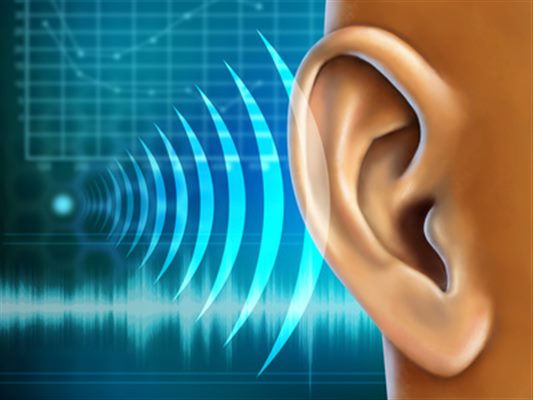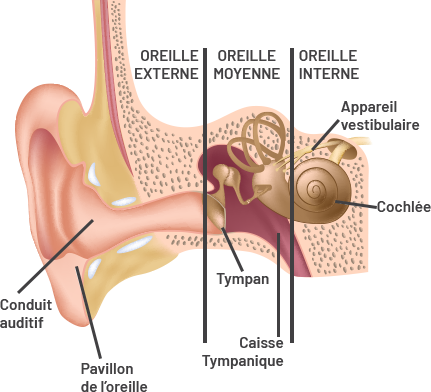Hearing
Hearing: a sense to preserve
Hearing is the brain’s ability to receive and process sounds around us. The ear is an amazing organ that collects sound waves in the air and transforms them into neural impulses to be sent to the brain where they are processed so that hearing occurs. Normal hearing requires normal functioning of the ear, neural pathways, and brain. Any deficit that can occur at any point in the auditory system can result in hearing loss.
The ear can perceive sounds ranging from barely audible to very loud. Sound intensity is measured in units called decibels, abbreviated as “dB.” A decibel expresses the relative intensity of sounds on a scale from zero to about 120 dB. Normal speech occurs around 60 to 65 dB, and most people find sound as loud as 100 dB uncomfortably loud.
Hearing is a key element for communication
Hearing means being able to communicate with those around you and find your way around in space and time. Hearing plays an equally essential role in children’s language learning.
Hearing loss can impact the way we live and perceive our surroundings.
Now you understand why it is so important to preserve your hearing.


The ear, a function of perception and transmission
Our ability to hear is based on a very complex system composed of three parts: the outer ear, the middle ear and the inner ear, each having a specific and determining role in the hearing process.
The ear combines a perception function intended to capture sounds, and a transmission function to transmit these sounds to the brain.
Hair cells
There are approximately 15,000 hair cells and their role is essential in the processing of sound information. Prolonged exposure to high volume can cause their alteration, partial or total. Once damaged, these cells do not regenerate.
L’OREILLE EXTERNE : It captures sounds arriving at the auricle and carries them to the eardrum through the ear canal.
THE MIDDLE EAR : It acts as an amplifier. Vibrations reaching the eardrum are captured, amplified and then transmitted through the chain of ossicles (the hammer, the incus and the stirrup) to the inner ear and the cochlea.
THE INNER EAR : It is divided into 2 parts: the organ of hearing (the cochlea) and the organ of balance (the vestibule). Its role is to transform sound (mechanical vibration) into electrical stimulation and to transmit it to the cerebral cortex through the auditory nerve. The signal is then decoded and interpreted by the cerebral auditory areas.





